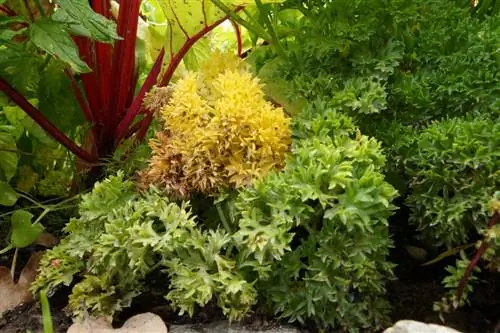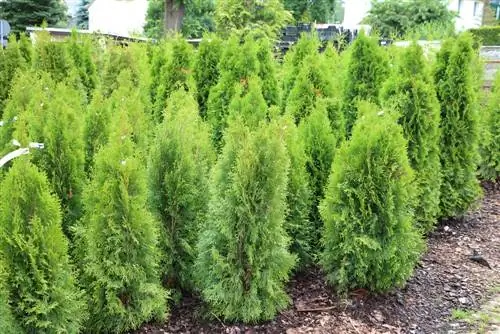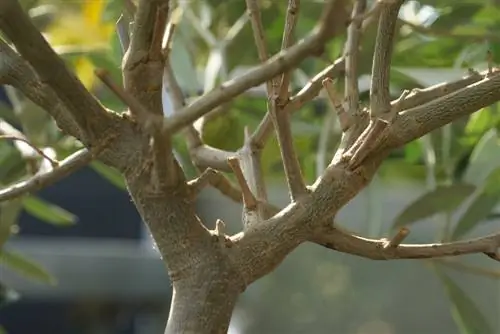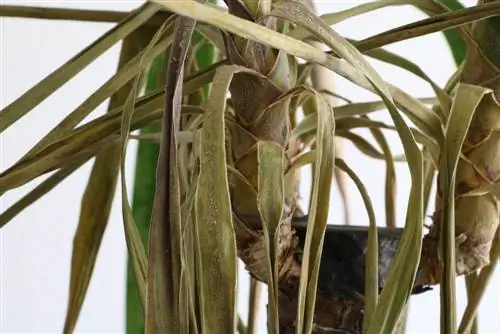- Author admin [email protected].
- Public 2023-12-17 03:39.
- Last modified 2025-01-24 12:45.
The parsley in the garden can be quite tricky. Whenever she doesn't like something, she reacts to it and gets yellow leaves. The causes for this usually lie in incorrect cultivation.
Parsley disease
The parsley plants in the garden look magnificent and bright green one day, but the next day the leaves turn yellow and as a result the plant slowly starves and eventually dies. If this phenomenon is observed, it is usually caused by parsley disease, which gardeners fear. The characteristic by which the disease can first be recognized is yellow leaves. In addition, it can also be observed that
- the plant is literally stunted,
- the leaves dry up and turn brown,
- finally the stem also turns brown,
- the plant eventually dies.
Once the parsley disease has broken out, it is very difficult to stop its progress. The reasons for the illness usually cannot be resolved from one day to the next. Often only prevention helps to prevent the disease from breaking out in the first place.
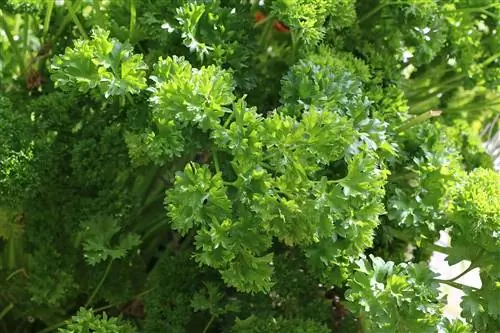
The most important thing to pay attention to is:
- be sure to choose the right location for the plant
- be sure to pay attention to crop rotation
- don't water too much or let the soil dry out
- ensure a clean floor without fungal spores and pests
Tip:
If the parsley in the bed does not grow year after year and instead has mostly yellow leaves, the soil should be checked for fungi and other pests.
Choose the right location
The parsley plants don't like it too warm and therefore don't like a sunny location. Instead, they prefer a partially shaded place to grow and thrive. If the soil is still relatively loose and very rich in humus, the plant will grow in the most beautiful green and not show any yellow.
Observe crop rotation
What many gardeners don't know: In a certain sense, parsley doesn't like itself. The plant is therefore incompatible with itself. It is therefore crucial that the correct crop rotation is followed. There must not have been any other parsley plants in the location where the plant is planted for three years. OtherUmbelliferous plantsshould also have grown there in the previous three yearsnot. These mainly include:
- Carrots
- Dill
- Celery
- Fennel
Whenever another umbelliferous plant is grown there next year, the risk of fungi and soil pests multiplying there increases significantly.
Proper watering
How tricky parsley can be is shown above all by the fact that the plant reacts immediately if it is watered incorrectly. In fact, watering is by far the biggest problem when caring for the plant.
The following applies:
The plant must not be too dry. On the other hand, it doesn't tolerate too much moisture or even waterlogging. Make sure the soil is permeable and loose right from the start.
If yellow leaves appear as a sign of parsley disease, we recommend checking the watering behavior first. Depending on whether you are watering too much or too little, your watering behavior should be changed immediately if you still want to get the parsley disease under control and save the plants. Always only water when the soil on the plant is slightly dry. With a finger you can easily determine whether the top layer of soil has dried out. Be careful and economical when watering.
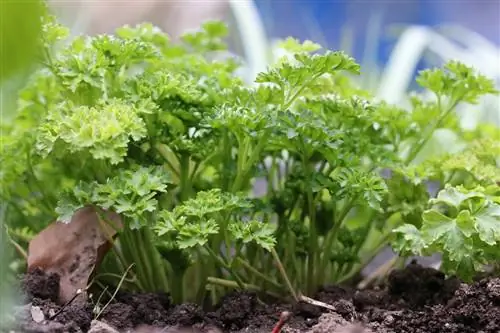
Fungal spores and soil pests
Pests feel right at home at the roots of all umbelliferous plants. These pests are primarily:
- Root lice
- Nematodes
- Maggots
- Mushroom spores
The pests are usually so small that they cannot be seen with the naked eye. Once they have spread in the garden, there is a high risk that the compost will also be infected. Infected compost should therefore under no circumstances be used for parsley plants. If the leaves have turned yellow and you suspect that soil infested with pests or fungal spores is to blame, you should definitely have the soil examined by a laboratory and, if necessary, replace it immediately.

